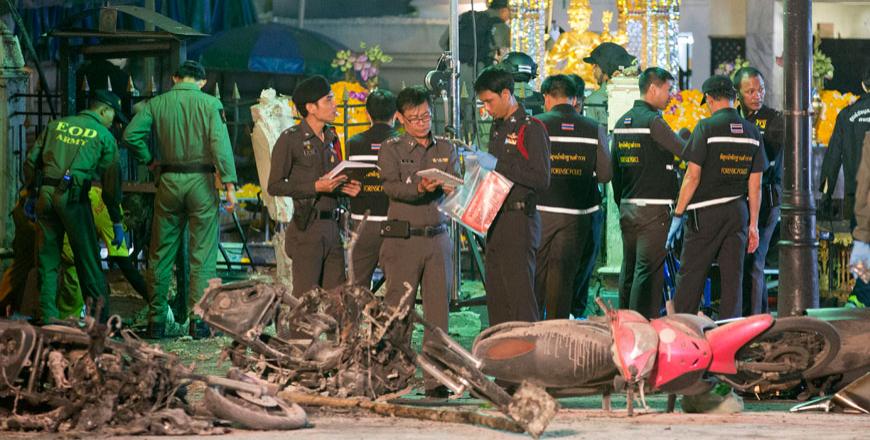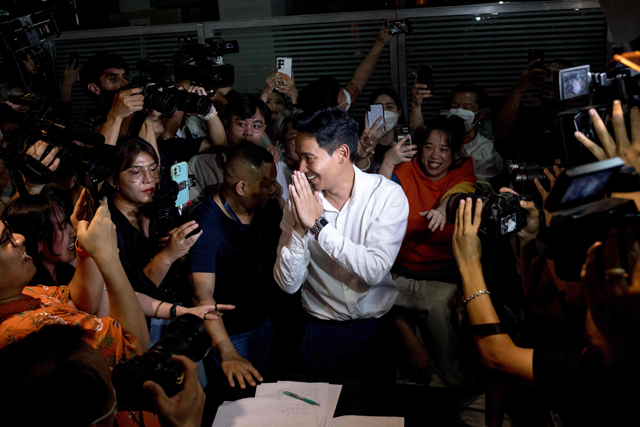You are here
Thailand eyes luxury tourists, operators stress safety reassurance
By Agencies - Apr 03,2016 - Last updated at Apr 03,2016

Two truck drivers wait to deliver the sugarcane harvest at a sugar mill in Pakchong district in Ratchaburi province, Thailand, March 22, 2016 (Reuters photo)
BANGKOK — Thailand needs to do more to keep its tourists safe if it wants to achieve its objective of attracting more high-end travellers, operators say, or it risks losing out to its up-and-coming neighbours.
With its palm-fringed beaches, Buddhist culture and racy nightlife, Thailand has been the poster child for Asian tourism for decades, attracting a range of visitors from backpackers and adventure-seekers, to families and culture vultures.
In recent years, increasing numbers of Chinese tourists have joined the mix. But dark clouds could be forming even as a record 32 million tourists are expected this year.
The industry, which accounts for 10 per cent of the gross domestic product (GDP), has been resilient to political upheaval over, the last decade that has included violent street protests and military coups.
Even a deadly 2015 bomb attack on a Bangkok shrine popular with tourists failed to dent arrivals to any discernable degree.
But crime and accidents, and the perception Thailand is becoming a mass market, could pose a bigger threat to the government plan.
The murder of two British tourists in 2014 hit world headlines. Last month, two French women filed complaints of rape.
Woeful road safety, accidents at sea, scams and even angry elephants have added to what seems like a never-ending litany of bad news.
"Visitor volume is high but with that the probability of crime also increases," Surapong Techaruwichit, chairman of the Hotel Association of Thailand, told Reuters. "We need to reassure tourists that Thailand is safe."
The government's Tourism Authority now wants to focus on "quality tourism", and has launched a campaign to attract visitors who spend more, and hopefully stay out of trouble.
"Many people say tourists come here because it is a cheap destination. This needs to change," Tourism and Sports Minister Kobkarn Wattanavrangkul told a tourist safety workshop.
But luring more discerning travellers might not be so easy.
"If we want to attract the high end we need to reassure them. Meeting our target luxury-traveller target will be harder after the recent negative publicity," said Surapong.
The figures can be frightening.
Fourteen US citizens died of unnatural causes in Thailand from January to June 2015, higher than the 11 who died in France, a top destination for US tourists, according to US State Department figures.
Thailand had the second-highest number of deaths of British nationals in 2014 after Spain, which is the top holiday spot for Britons, British Foreign Office figures show.
Major General Surachet Hakphan, commander of the Tourist Police, says things will change. The men and women in his division will focus on safety, he said.
"Elephants trampling on tourists and tourists having their legs cut off by speed boats, this won't happen any more," Surachet added, referring to two recent fatal accidents.
According to Jason Friedman, managing director at J.M. Friedman & Co. - Bespoke Hospitality Services, Thailand had managed to preserve its image as a holiday paradise despite the bad news
"People want to believe Thailand is a great place and nothing goes wrong here — this is a perception that works in our favour," Friedman said.
For Friedman, who focuses on the high end, the bigger risk is the volume of arrivals creates the impression that Thailand has become a mass market. Or as Friedman puts it: industrial tourism.
Tourists wanting off-the-beaten-track travel need not look far, he remarked.
"The industrial-strength tourism will push people away. They have started looking for remote beaches in Cambodia or Myanmar," he added.
Separately, chronic water shortages are pushing the country to move away from a grain that dominates its fields and has defined a way of life for generations. Thailand has long served as one of the globe's main rice bowls and is one of the world's top rice exporters.
Laddawan Kamsong has spent the past 40 years coaxing rice from her plot in central Thailand, but she is tired of watching her farmland squeezed dry by increasingly severe droughts.
"I plan to replace some rice paddies with limes," she said after attending a government-run workshop urging farmers to diversify their crops.
But four consecutive years of below-average rainfall have drained water reserves and strangled production, pushing many farmers into debt.
The current drought, the worst the country has seen in decades, has hit nearly a third of Thailand's 76 provinces, particularly in the rice-heavy central and northeast.
Reservoirs are also dropping to historically low levels.
The kingdom's military government is now organising training sessions to encourage millions of rice farmers to diversify into crops that require less irrigation.
Unlike nearly all other crops, rice grows best in a flooded field, with the stalk's base completely submerged for most of the growing season.
At an army-run workshop held in patch of shade in a field in Nonthaburi province near Bangkok, Laddawan was sold the merits of cultivating fruit trees.
In other regions, they are suggesting sugarcane or peas.
These alternatives will drastically reduce water consumption but also break the monoculture that has deteriorated Thai soil for decades.
"We have no choice, we need to adapt," Laddawan said, explaining that she used to plant three rice crops annually, but next year will only have enough water for one.
Rivers run dry
As the drought bites, some 2,000 Thai villages are surviving off water delivered by the government, while “rainmaking” airplanes are flying over parched plains, sending an iodine solution into the air in an effort to seed clouds.
After last year's especially weak rainy season, which falls between June and October, the ruling military junta asked farmers to abandon their winter rice crop, which is normally cultivated through irrigation and not rainfall.
"The amount of water in storage is low and now we expect that this year's rainy season will be delayed because of El Nino," said Suphot Tovichakchaikul, who leads the country's water management department.
The El Nino weather phenomenon tends to weaken the annual monsoon, which is a lifeline to farmers across the region.
According to a study from the University of the Chamber of Commerce, the drought could shave between 0.5 and 0.8 per cent off Thailand's GDP growth, with its annual rice production predicted to drop almost 30 per cent to 25 million tonnes.
Thailand is also facing increasing competition from Vietnam and India, who have been jockeying for the top exporter spot and at times surpassed Thailand's output in recent years.
The junta says Thai rice is no longer sustainable on its current scale.
"We must find a way to motivate rice producers to switch to other crops," junta chief Prayut Chan-o-Cha said in a recent speech.
His military government, which grabbed power in a 2014 coup, has struggled to revive Thailand's flat economy, which is beset by falling exports, high household debt and low consumer confidence.
Rice politics
Yet convincing the country's rice growers to change their crops is no easy task.
"It is difficult because it is their career, it is their way of life for decades conceded Somnuk Srithiengtrong, head of the ministry of agriculture for Nonthaburi.
In recent years rice farming has become entwined with a strong political identity too.
Many rice farmers support the family of Thaksin Shinawatra, a controversial ex-premier who injected money into villages in the kingdom's long-neglected rural north and northeast.
The former telecom tycoon was ousted in a 2006 coup.
But parties linked to him have won all Thai elections since.
His sister Yingluck, who became prime minister in 2011, also poured subsidy into the rice sector, winning the devotion of the so-called grassroots "Red Shirt" pro-democracy movement.
She was also ousted in a 2014 coup, and faces up to a decade in jail over negligence charges linked to her rice subsidy scheme.
That policy saw the government purchase paddies from farmers at nearly twice the market rate, pumping cash into the Shinawatra heartlands.
But it led to massive rice stockpiles after global traders turned away from the Thai grain, whose price had been inflated by government hoarding.
The ruling junta has shot down the Shinawatra's policies as "populist".
But it too recently resorted to massive rural subsidies to prop up the country's floundering rice and rubber industries.
And while a reliance on rice looks increasingly perilous, farmers like Prateep Jinpracha, 46, say that cannot be swayed to change crops.
"Growing rice, that's what my parents and grandparents did before me," she said. "This is my life."
Related Articles
BANGKOK — At least 16 people were killed and dozens injured when a bomb exploded Monday outside a religious shrine in a bustling hub of the
BANGKOK — Thai opposition parties dominated the early vote count in Sunday's national elections, in what was shaping up as a huge rejection
BANGKOK — Foreign investment in Thailand plummeted last year, official data showed, the latest sign that the kingdom's once-vibrant economy

















